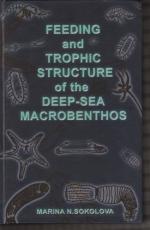|
This section contains 282 words (approx. 1 page at 300 words per page) |
One important concept in the study of ecosystems is their trophic structure, which identifies the organization of the ecosystem by grouping its organisms according to where they get their energy. Each grouping is called a trophic level, and that level refers to their specific place within the ecosystem's trophic structure. The trophic structure, in turn, is the structure of all the energy flows between these different populations of organisms. A community's trophic structure is also sometimes refered to as its food web or food pyramid, a series of interlinked food chains.
The bottom end of the structure is always a primary producer: a green plant or autotroph which captures solar energy and transforms it into biomass. That energy travels up the food chain to the second trophic level, herbivores or primary consumers, which feed upon organisms at the first level. Higher trophic levels are occupied by small carnivores - who feed on the herbivores - on up to larger carnivores. At each consumer level of the chain are decomposers who recycle energy back to the primary producers. There are some organisms, such as human beings, that feed at more than one trophic level.
At each step up the food chain, almost 90% of the chemical energy being transferred is lost as heat energy. As a result, in most ecosystems there is generally more biomass at lower trophic levels than at subsequent levels.
The study of trophic structure is not only useful for outlining the flow of energy in an ecosystem. It also allows us to predict the flow of chemical elements, which is increasingly important as we try to track the path and accumulation of pollutants in an ecosystem.
|
This section contains 282 words (approx. 1 page at 300 words per page) |


